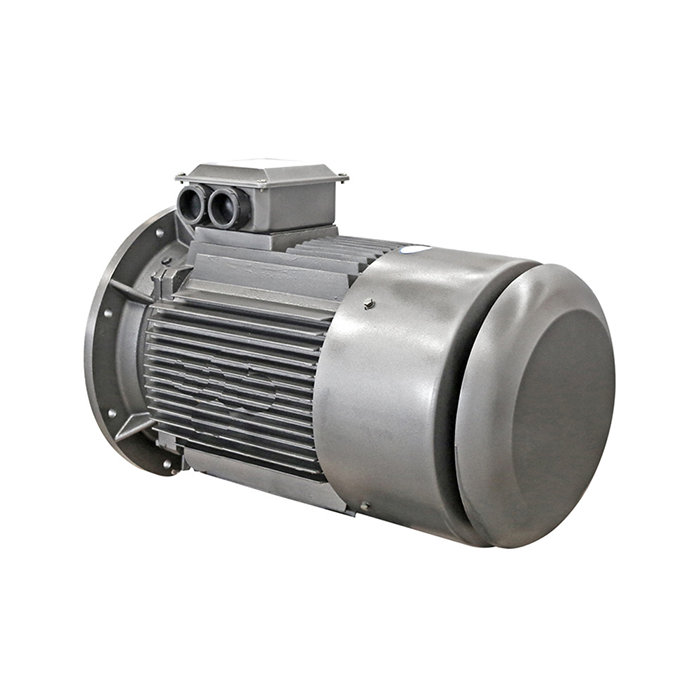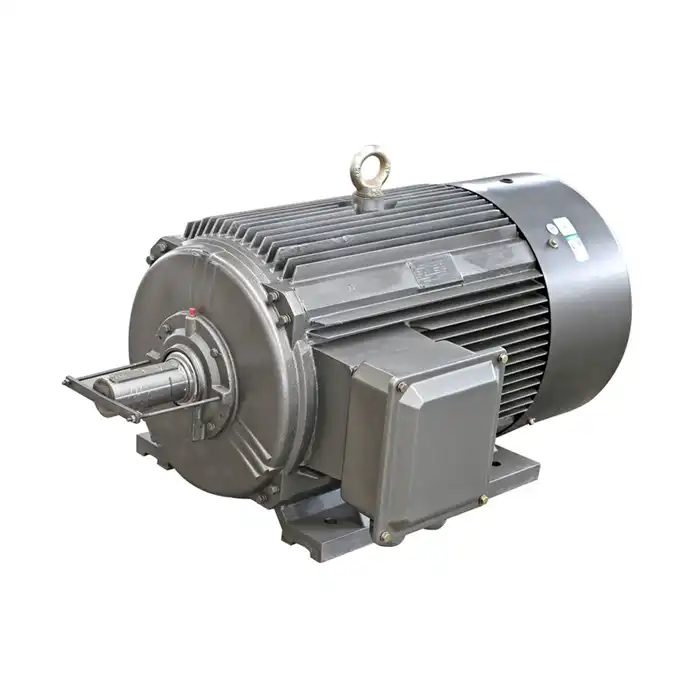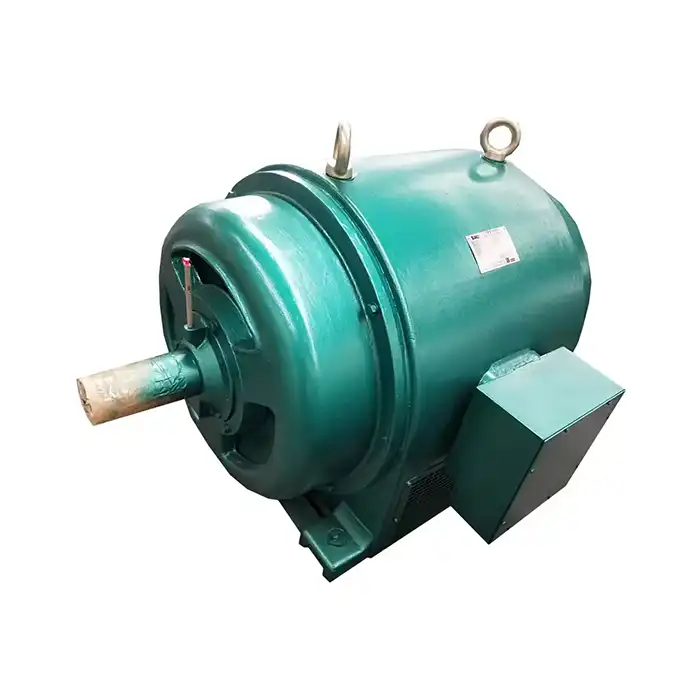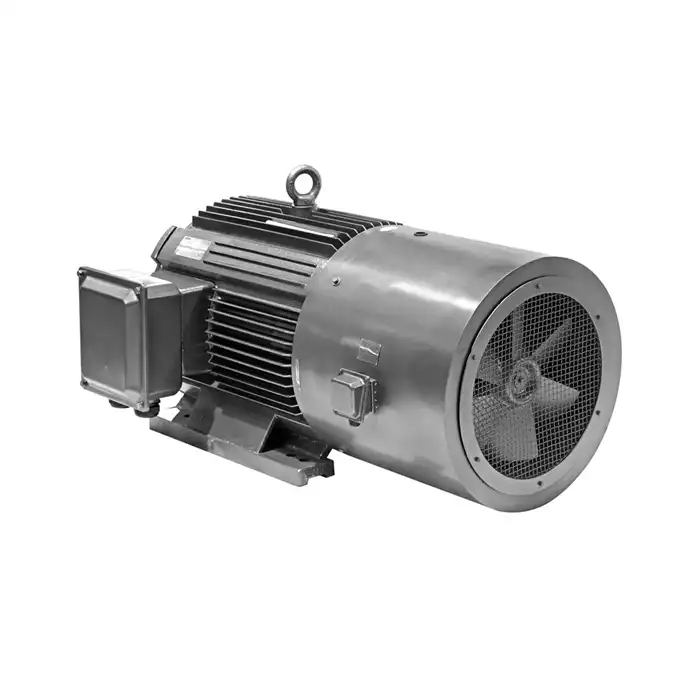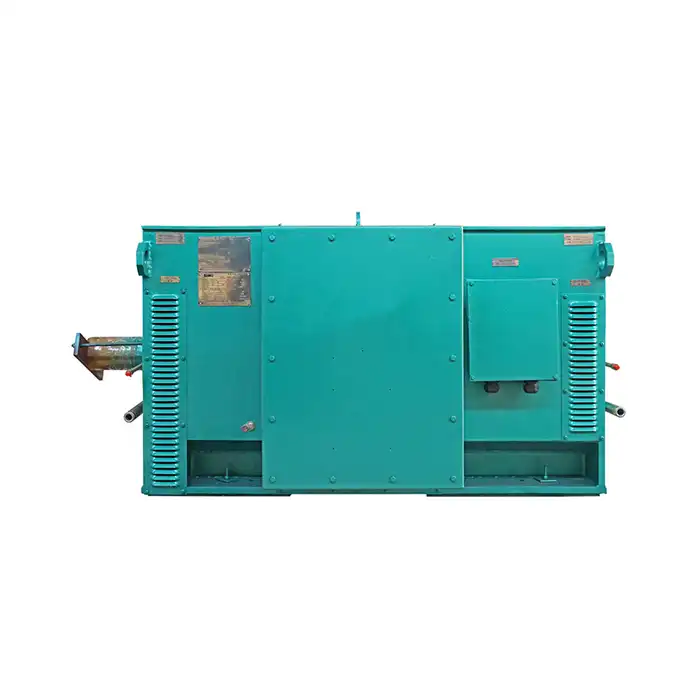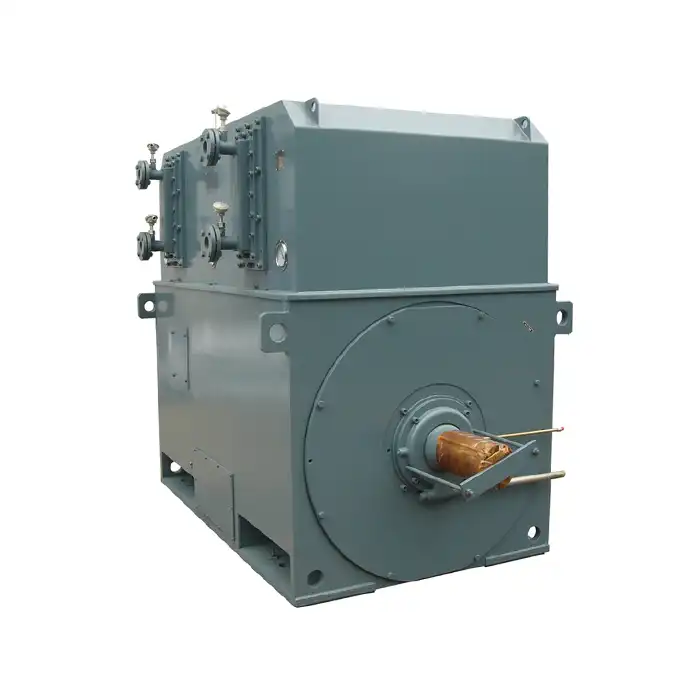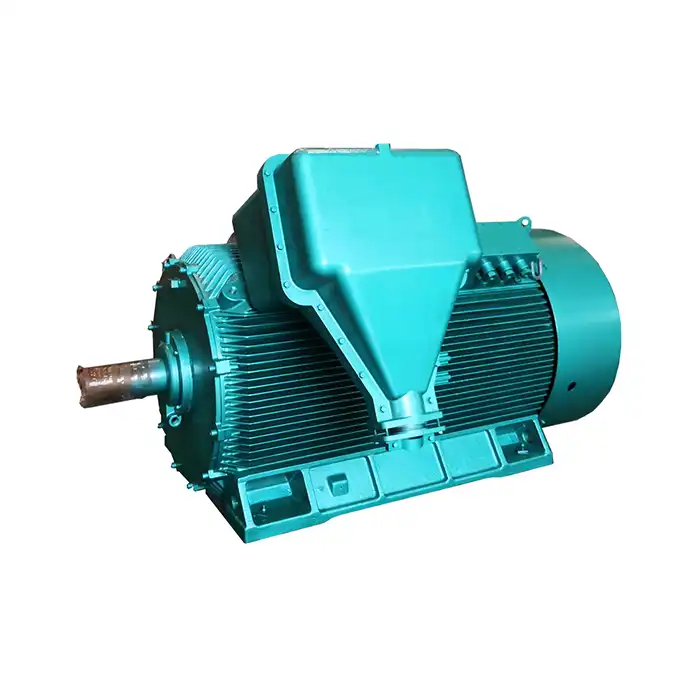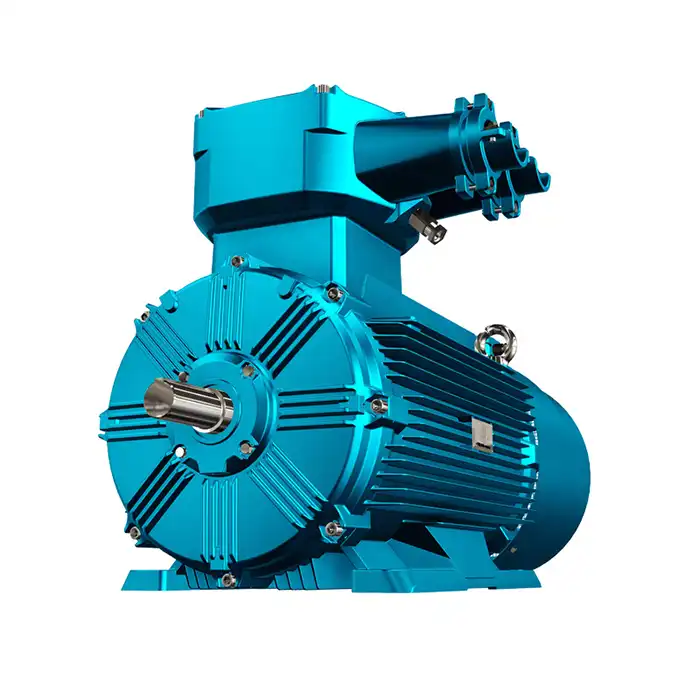Troubleshooting an inverter duty induction motor requires a keen understanding of both the motor's design and the variable frequency drive (VFD) that controls it. These motors are specifically engineered to handle the rapid changes of speed and torque commanded by VFDs, but problems can still arise. Common issues typically involve overheating, vibration, and irregular noise, often stemming from improper installation, electrical abnormalities, or inadequate maintenance. Addressing these concerns promptly ensures optimal performance and longevity for your inverter duty induction motor.
Understanding Inverter Duty Induction Motors
What is an Inverter Duty Induction Motor?
Inverter duty induction motors are specialized motors designed to operate efficiently with variable frequency drives (VFDs). Unlike standard induction motors, they possess reinforced insulation systems and enhanced thermal capabilities to tolerate the fluctuating voltages and frequencies imposed by inverters. These motors withstand rapid accelerations, frequent reversals, and high torque demands commonly seen in modern manufacturing and process control environments. Selecting an inverter duty motor ensures compatibility and durability in demanding industrial applications such as automotive manufacturing, textiles, pharmaceuticals, and more.
How Does an Inverter Duty Motor Work?
An inverter duty motor converts electrical energy into mechanical energy with the aid of a variable frequency drive. The VFD modulates the power supply frequency and voltage, enabling precise control over motor speed and torque. This enables a wide speed range from 5Hz up to 100Hz, well beyond the constant speeds of traditional motors. The benefits include reduced energy consumption, enhanced process control, and decreased mechanical stress on equipment. These motors typically feature reinforced insulation, low vibration designs, and specialized bearings that improve reliability under variable load conditions.
Common Issues and Solutions with Inverter Duty Induction Motors
Inverter duty induction motors are designed to operate efficiently with variable frequency drives (VFDs), but like any motor, they can encounter specific challenges. Here are some common issues associated with these motors, along with potential solutions:
1. Overheating Due to Excessive Harmonics
Inverter duty motors can experience overheating when exposed to excessive harmonics generated by the VFD. These harmonics cause extra current to flow through the motor windings, leading to excessive heat.
Solution: Install a line reactor or filter to reduce harmonic distortion and protect the motor from overheating. Ensuring that the motor is properly sized for the application and the VFD is set to appropriate parameters can also help mitigate this issue.
2. Bearing Failures
Inverter duty motors can suffer from bearing failures due to high-frequency currents, often referred to as "shaft voltage." These currents can damage the motor bearings over time.
Solution: Using insulated bearings or shaft grounding rings can prevent these damaging currents from reaching the bearings, thus extending their life.
3. Insulation Stress
Constant switching of the VFD can cause stress on the motor's insulation, especially when the motor is used in high-frequency applications. This can result in premature insulation degradation and eventual motor failure.
Solution: Select motors with higher insulation ratings specifically designed for inverter duty, such as Class H insulation, which offers better resistance to temperature fluctuations.
4. Reduced Efficiency at Low Speeds
Inverter duty motors can experience reduced efficiency when operating at lower speeds. This inefficiency is often due to the lower torque at reduced frequencies and the inherent losses in the VFD.
Solution: Properly match the motor and drive to the load requirements. Utilizing closed-loop control can help optimize performance at lower speeds, ensuring that the motor operates efficiently throughout its speed range.
5. Overvoltage and Undervoltage Conditions
In some cases, the inverter can produce overvoltage or undervoltage conditions, especially if the drive is not correctly configured or the motor is subjected to load changes. These voltage fluctuations can lead to motor damage or operational instability.
Solution: Regularly check the VFD settings and ensure that the system is properly calibrated. Installing voltage protection devices can also safeguard the motor against extreme voltage variations.
6. Vibration and Noise
Abnormal vibrations and noise often signal underlying mechanical problems such as misaligned shafts, imbalanced rotors, or bearing wear.
Solution: Regular alignment checks and balancing routines can minimize vibrations. Additionally, using SKF, NSK, or FAG replacement bearings tailored to your application further reduces vibration and noise, maintaining smooth and efficient operation.
Maintenance and Efficiency Optimization
Regular Maintenance Tips
Proactive maintenance significantly boosts the reliability of inverter duty motors. Scheduling inspections every three months includes cleaning cooling ducts, lubricating bearings, verifying insulation integrity, and ensuring electrical connections remain solid. This prevents common failures related to accumulated dust, moisture, or loose wiring. Keeping a detailed maintenance checklist tailored to your motor's power and frequency specifications helps anticipate potential issues. A stable operating environment coupled with this systematic approach minimizes downtime and reduces repair costs.
Enhancing Motor Efficiency
Maximizing the motor's efficiency can lead to substantial operational savings and improved sustainability. Employing inverter duty motors that comply with IE3 or IE4 efficiency standards ensures power consumed corresponds closely to output performance. Techniques like optimizing load conditions to match the motor's rated speeds—ranging from 30Hz to 50Hz up to 5Hz to 100Hz—as well as monitoring power factor and torque help maintain peak efficiency. Modern designs are equipped with enhanced cooling and bearing protections to stabilize performance over long duty cycles.
Integrating Inverter Duty Motors into Your System
Applications in Various Industries
Inverter duty induction motors shine in a broad spectrum of industrial uses. Their capacity to handle continuous and frequent direction changes makes them ideal for mechanical equipment in steel rolling mills, paper manufacturing, lifting systems, and chemical plants. Additionally, they fit seamlessly into HVAC systems, textile machinery, and pharmaceutical production where process precision is paramount. Their compatibility with both domestic and foreign variable frequency power supplies further expands their versatility across sectors such as aerospace, electronics, and agriculture.
Custom Solutions and Services
Clients with unique operational demands benefit from customized motor solutions. Tailored options include specific voltage configurations, protection class enhancements beyond IP55, and bearing replacements upon customer request. Supplier collaborations often involve technical consultations to refine motor specifications and ensure integration efficiency. This collaborative approach not only optimizes motor performance but also streamlines maintenance procedures, enhancing overall productivity and reducing lifecycle costs.
Company Introduction and Product Services
At Shaanxi Qihe Xicheng Electromechanical Equipment Co., Ltd., we dedicate ourselves to delivering high-quality inverter duty induction motors engineered for energy efficiency, low consumption, and stable power delivery. Serving the U.S. market, we combine cutting-edge manufacturing processes, including vacuum pressure impregnation for insulation and precision die-casting, to produce motors with power ratings from 0.75kW to 355kW and frequency ranges extending up to 100Hz. Our products meet stringent IEC standards and carry certifications such as ISO 9001:2015 and CE marking. With fast delivery, 30-day return policies, and expert support available seven days a week, we ensure customer satisfaction at every stage.
Frequently Asked Questions
Q1: What are the main advantages of inverter duty motors over standard motors?
A: Inverter duty motors feature enhanced insulation, advanced bearing protection, and optimized cooling designs. These features allow them to handle the electrical and mechanical stresses induced by VFDs, offering improved energy efficiency, better thermal management, and longer operational lifespans compared to standard motors.
Q2: How often should inverter duty motors be maintained?
A: To maintain peak performance, inverter duty motors should undergo inspections, cleaning, and lubrication at least quarterly. Regular preventive maintenance helps identify issues such as overheating or bearing wear before they lead to costly failures.
Q3: What should I consider when purchasing an inverter duty induction motor?
A: Key considerations include the motor's power and frequency ranges, insulation class, protection level (at least IP55), brand reputation, availability of customer support, and compliance with international standards. Ensuring these factors align with your application needs will optimize both performance and reliability.
Conclusion
Troubleshooting inverter duty induction motors requires a comprehensive understanding of their unique operational demands and construction. Addressing common issues such as overheating and vibration through proper maintenance and selecting motors that meet IEC standards ensures continued reliability. By investing in quality motors with reinforced insulation and superior bearings, businesses across industries can achieve stable, efficient, and precise control for their mechanical processes. Partnering with experienced inverter duty induction motor suppliers who provide technical guidance and customized solutions further enhances operational success.
Where to Buy Inverter Duty Induction Motor
Expert support and high-quality inverter duty induction motors are essential for efficient industrial operations. Shaanxi Qihe Xicheng Electromechanical Equipment Co., Ltd. offers a broad range of motors with frequency conversion ranges from 5Hz to 100Hz and power ratings from 0.75kW to 1000kW, all compliant with IEC standards and tailored for numerous industrial sectors. Contact us at xcmotors@163.com to discover the ideal inverter duty induction motor for your application.
References
- Electrical Machines, Drives, and Power Systems by Theodore Wildi
- IEEE Transactions on Industrial Electronics – Variable Frequency Drive and Motor Technology Reports
- Electric Motor Handbook by H. Wayne Beaty and James L. Kirtley Jr.
- International Electrotechnical Commission Standard IEC 60034 – Rotating Electrical Machines
- Maintenance Best Practices for Electric Motors by the National Electrical Manufacturers Association (NEMA)
- IEEE Industrial Applications Magazine – Troubleshooting VFD and Motor Systems



